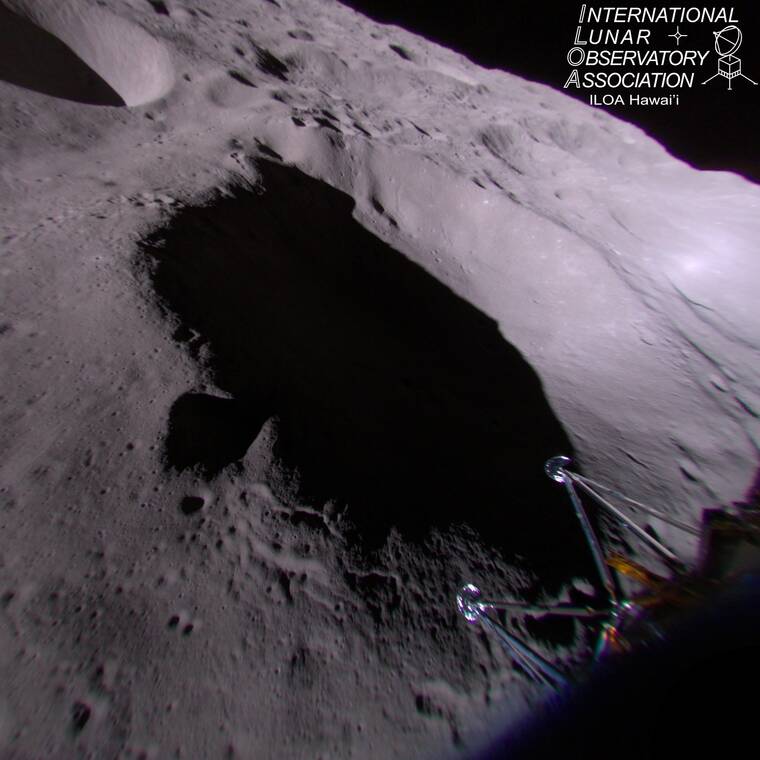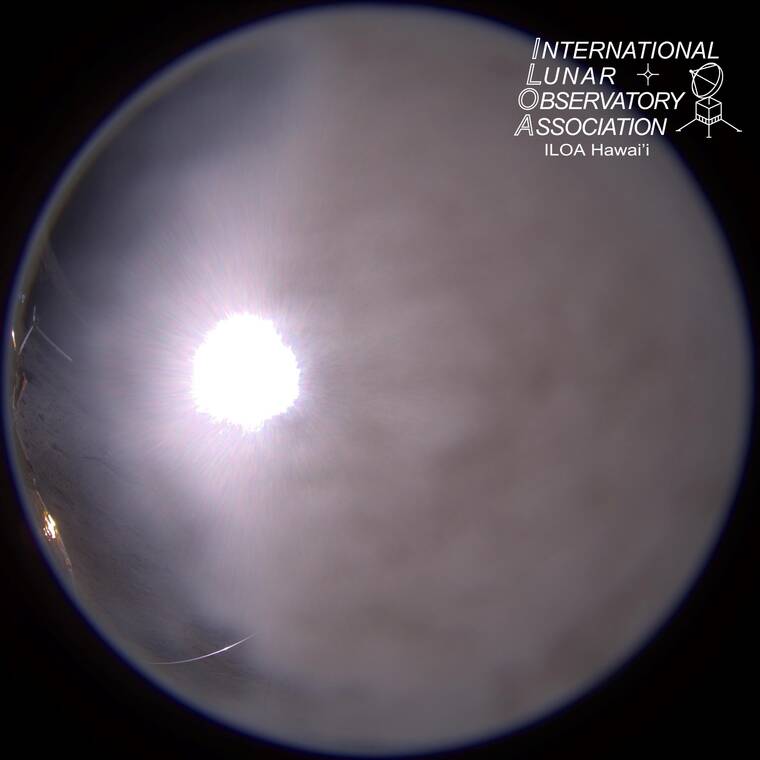Odysseus mission deemed mostly a success
HILO, Hawai‘i — The first successful American moon mission in 50 years went dark Thursday after a rough landing a week earlier, but Hawai‘i Island astronomers say the space flight was largely successful.
“I think it was about a 65 percent, 70 percent successful mission,” said Steve Durst, director of the Waimea-based International Lunar Observatory, which developed a pair of instruments carried by the Odysseus lunar lander.
Those two instruments were a wide-field camera and a narrow-field camera — the latter of which was named Ka ‘Imi, meaning “to search,” by a Kealakehe Intermediate School student. The two cameras were intended to capture some of the first images of the Milky Way from the moon’s surface.
Unfortunately, those plans were stymied almost immediately when the lander toppled over Feb. 22 upon landing.
Elisa Perednia, member of ILOA’s executive committee, said the cameras were able to broadcast some image and telemetry data — nine high-resolution images and 105 thumbnail images — after the rough landing, but were unable to capture any images of the lunar sky before Thursday, when the moon’s rotation carried the lander into the long lunar night, causing it to lose power after seven days of operation.
Perednia said what specifically happened to Ka ‘Imi is still being determined, but added that it would be “a pretty good guess” that fallen angle of the lander prevented it from getting any usable angle.
While the wide-field camera was able to capture a single image of the sun, that image was low-resolution and marred by lunar dust on the camera lens, Durst said.
Although ILOA’s hopes for lunar-based astronomy were dashed this mission, Durst said the observatory successfully met other goals for Odysseus.
“I think we helped build visibility and credibility for ILO-1,” said Durst, referring to a future ILOA mission to land a more long-lived craft atop a lunar mountain to conduct long-term astronomical observations.
Durst said that mission could go forward in 2026, with a bit of luck. Durst added ILOA is still analyzing what data came back from Odysseus, and said that there is still a small chance of the lander regaining power in about two weeks when the lunar morning arrives.
Durst also said ILOA’s affiliate publishing arm, the Space Age Publishing Company, successfully broadcast its weekly calendar newsletter from the moon. Included among Odysseus’ payload was a copy of Space Age’s Feb. 26 newsletter, which the lander broadcast back to Earth. That broadcast included a blurb encouraging advertisers to buy “lunar broadcasting advertising” space on future ILOA missions.
Perednia said ILOA also will raise additional funds for ILO-1 by auctioning the naming rights for Odysseus’ wide-field camera, although Durst added that physically labeling the instrument will probably not happen for a long time.
“It’s not likely to be used again until some future astronaut goes up there and gets it working again,” Durst said.
•••
Email reporter Michael Brestovansky at mbrestovansky@hawaiitribune-herald.com.


